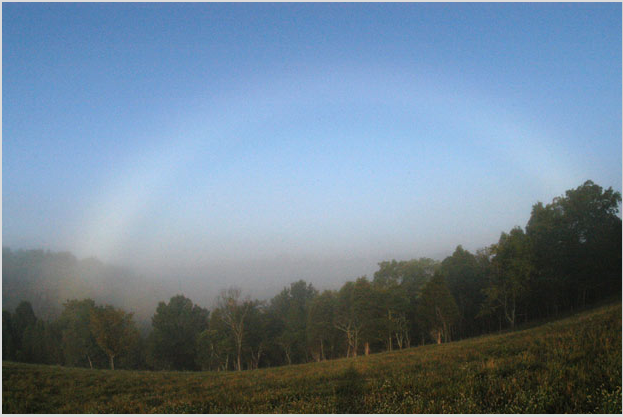Lunar green flash
Lunar Green Flash: A Phenomenon of Rare Beauty
Have you ever gazed up at the night sky and witnessed a mesmerizing display of colors surrounding the moon? This enchanting phenomenon is known as the Lunar Green Flash. While not as well-known as its daytime counterpart, the Green Flash, this ethereal spectacle is a sight to behold. In this article, we will delve into the captivating world of the Lunar Green Flash, exploring its causes, where and when it can be observed, and what makes it so unique.
Understanding the Lunar Green Flash
The Lunar Green Flash occurs when the moon is low on the horizon, just above the Earth's surface. As the moon's light passes through the Earth's atmosphere, it undergoes a process known as atmospheric refraction. This bending of light causes the different colors within the moon's light to separate slightly. Under specific atmospheric conditions, this separation can result in a green flash appearing on the upper rim of the moon.
Atmospheric Conditions for Observing the Lunar Green Flash
To catch a glimpse of the Lunar Green Flash, several factors must align. Here are some key considerations:
- Low Horizon: The moon must be close to the horizon, as this is where atmospheric refraction is most pronounced.
- Clear Skies: A clear sky is essential for optimal visibility and to minimize any obstructions that may hinder observation.
- Minimal Atmospheric Disturbances: Ideally, there should be minimal atmospheric turbulence or pollution that could distort or obscure the phenomenon.
- Precise Timing: The moment of the Lunar Green Flash is fleeting, lasting only a few seconds. Therefore, precise timing and patience are crucial.
Where and When to Observe the Lunar Green Flash
The best locations to observe the Lunar Green Flash are areas with unobstructed views of the horizon. Coastal regions or open landscapes offer ideal vantage points. Additionally, observing during the twilight hours, when the sky is transitioning from day to night, increases the chances of witnessing this rare event.
While the Lunar Green Flash can occur throughout the year, certain periods enhance the likelihood of observation. These include:
- Spring and Autumn Equinoxes: During these times, the moon's path aligns with the horizon, providing optimal conditions for the phenomenon.
- Winter Solstice: The long nights of winter offer extended opportunities for observing the Lunar Green Flash.
- New Moon Phase: The absence of moonlight during this phase can make the green flash more visible against the darkened sky.
The Magic of the Lunar Green Flash
The Lunar Green Flash is a testament to the beauty and complexity of our atmosphere. Its rarity adds to its allure, captivating those fortunate enough to witness it. Here are some fascinating aspects of this phenomenon:
- Unique Color: Unlike rainbows or other atmospheric optics, the Lunar Green Flash displays a distinct emerald hue. This rarity sets it apart from other natural optical phenomena.
- Transitory Nature: The brevity of the Lunar Green Flash adds to its mystique. Lasting only a few seconds, it demands undivided attention and a keen eye to capture its fleeting brilliance.
- Scientific Significance: The study of the Lunar Green Flash provides valuable insights into atmospheric refraction and light scattering processes. Researchers continue to explore these phenomena to deepen our understanding of Earth's atmosphere.
In conclusion, the Lunar Green Flash offers a captivating glimpse into the wonders of our atmosphere. Its rare occurrence and unique beauty make it a sight sought after by sky enthusiasts and scientists alike. By understanding the conditions necessary for observation and the best times and locations to witness this phenomenon, we increase our chances of experiencing this ethereal display firsthand. So, keep your eyes on the horizon, and who knows, you may be one of the lucky few to catch a glimpse of the enchanting Lunar Green Flash.

Morning fogbow, Ohio.
Fogbows are almost as large as rainbows but much broader.
Like rainbows they are always opposite the sun.
The shadow of photographer Michael Ellestad (atmospheric optics site) is at the antisolar point and the centre of the bow.
Image ©2004 Michael Ellestad.
On hills, mountains and in cold sea mists are where you will most often see a fogbow. But as the image shows, they can be found anywhere provided there is thin fog and fairly bright sunshine.
Search when the sun breaks through mist or fog. Look away from the sun and at an angle of 35-40° from your shadow which marks the direction of the antisolar point. Some fogbows have very low contrast so look for small brightenings in the misty background. Once caught, they are unmistakable.
The sun must be less than 30 - 40° high unless you are on a hill or high up on a ship where the mist and fogbow can be viewed from above.
Fogbows are huge, almost as large as a rainbow and much much broader.
Finally, check for a glory at the bow's centre. Glories, fogbows and coronae are all manifestations of the same light scattering process.
Note: this article has been automatically converted from the old site and may not appear as intended. You can find the original article here.
Reference Atmospheric Optics
If you use any of the definitions, information, or data presented on Atmospheric Optics, please copy the link or reference below to properly credit us as the reference source. Thank you!
-
<a href="https://atoptics.co.uk/blog/lunar-green-flash/">Lunar green flash</a>
-
"Lunar green flash". Atmospheric Optics. Accessed on April 20, 2024. https://atoptics.co.uk/blog/lunar-green-flash/.
-
"Lunar green flash". Atmospheric Optics, https://atoptics.co.uk/blog/lunar-green-flash/. Accessed 20 April, 2024
-
Lunar green flash. Atmospheric Optics. Retrieved from https://atoptics.co.uk/blog/lunar-green-flash/.